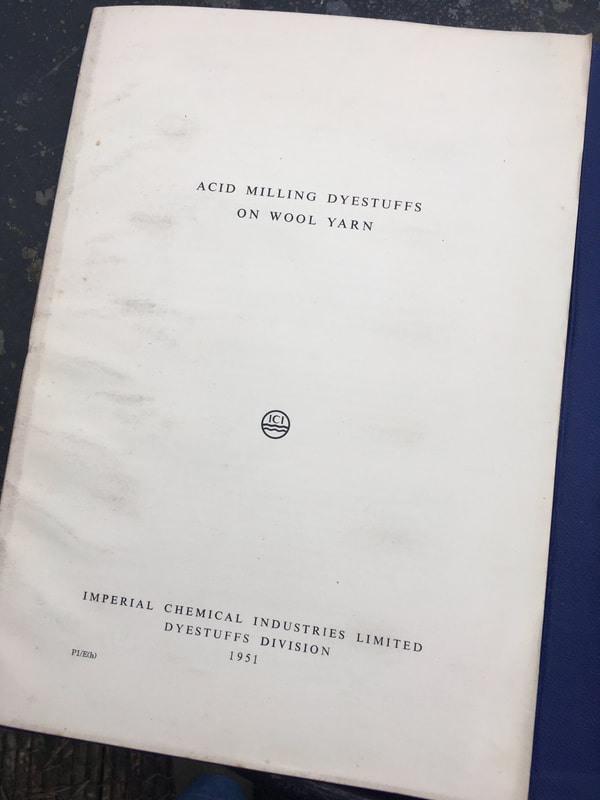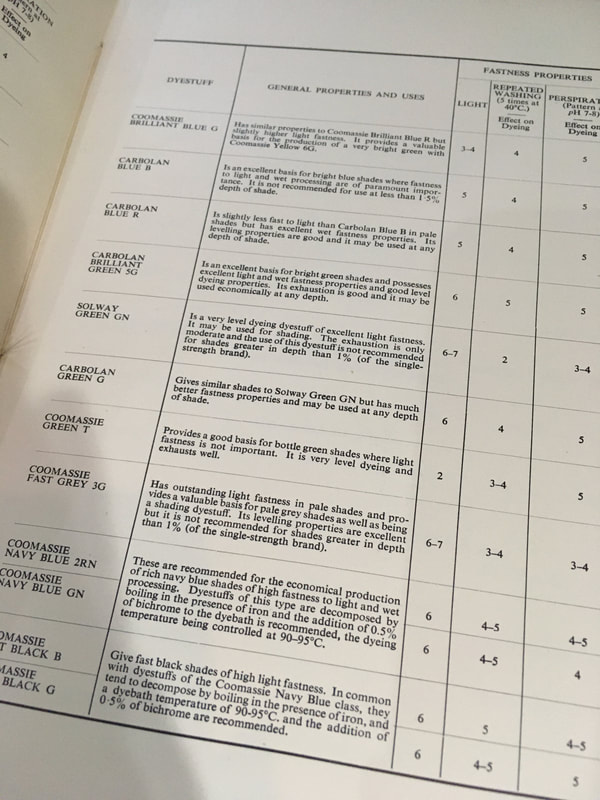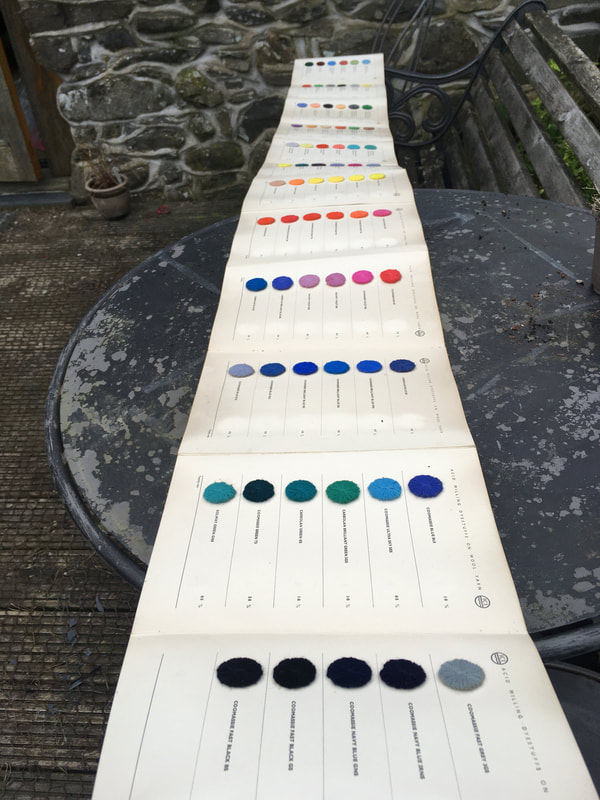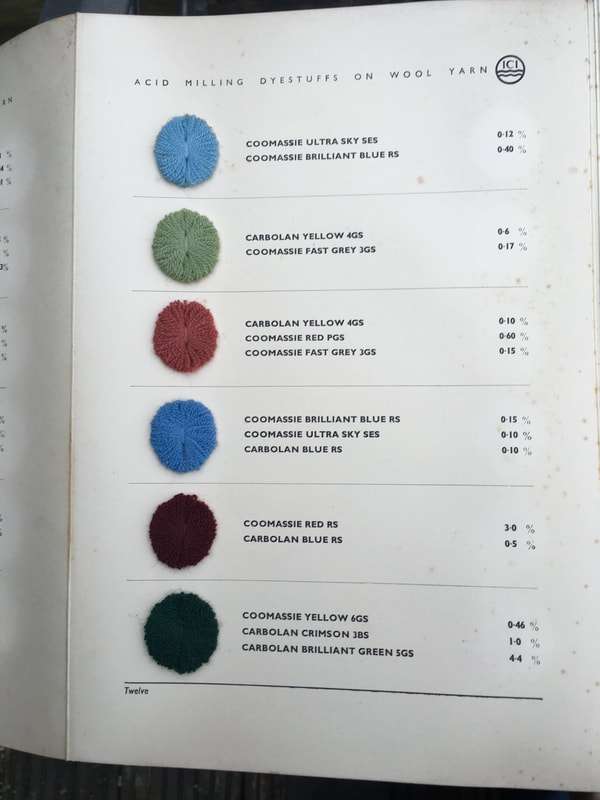|
It's very rare for me to dye my fibres using a recipe... I have a very small number of instructions written down, but generally I enjoy the creative problem solving of continually coming up with new colour combinations. However, doing that means I need to have a really good understanding of my own palette of dyes, and which colours to use, and how much to use of them. I generally dye with pure primaries (red, yellow, blue, turquoise, magenta), but also make use of pre-mixed browns, a black and a grey, and also use a violet, orange and green. My palette of dyes isn't as small as some dyers (who only use primaries and black), but pretty small compared to others who use a lot of pre-mixed colours. Familiarity means I know my particular set of colours really well, and can usually nail the colour I am after on the first attempt. When I teach dyeing workshops I'm often asked how I know which colours to use, and in reality there is nothing that beats practise. You can do this by creating a recipe book or sample cards, but this can be time consuming and expensive in terms of materials. I also recommend a couple of games to people who want to create a better idea of colour sense, because I do firmly believe that it's something you can teach yourself to be better at. Blendoku, and I Love Hue both use similar principles of arranging coloured tiles in to the correct order. They're really handy for developing ideas around colour combinations, contrasting colours and the effects of adding tints and shades. Now my Mum knows that I have an interest in colour, and in textile history, so she bought me this for Christmas. It's a 1951 recipe card for the use of acid milling dyes on yarn, together with details of the lightfastness, wash fastness and any particular notes about the individual dye colours. There's a few instructions here that would definitely not be recommended for the home dyer, bichrome is another name for Potassium Bichromate, which is a known carcinogen. This website doesn't render very well, and unfortunately the pictures and text have ended up overlaid, but there's plenty that still readable and it tells the story of ICI and the British Dyestuffs, who are sadly no longer producing dyes in the UK. I found copying and pasting the text in to a word document made it much more legible.
One of the many reasons I will be watching nervously over the next few months is to see how the British Government handles the integration of the chemical industry. EU legislation means we know that the chemicals we can buy, and that are used to make just about everything are safe. Whilst we were part of the EU any chemical registered for sale here could be sold throughout Europe and UK companies can buy chemicals from Europe on the same basis. All testing is in the public domain. The government has decided it no longer wants to align us to those standards, that means UK manufacturers will face added expense to sell their chemicals in the EU, and from a dyeing perspective means any EU suppliers will have to register their products with a UK agency in order to sell in the UK. In short... the whole thing is an absolute shambolic mess, and instead of cutting the red tape that was promised by Brexit it's going to lead to increased costs, lower safety standards, and shortages. This twitter thread from an expert in the chemical industry makes for chilling reading. Comments are closed.
|
Archives
January 2024
Categories
All
|
Hilltop CloudHilltop Cloud- Spin Different
Beautiful fibre you'll love to work with. Established 2011 VAT Reg- 209 4066 19 Dugoed Bach, Mallwyd, Machynlleth,
Powys, SY20 9HR |





 RSS Feed
RSS Feed


